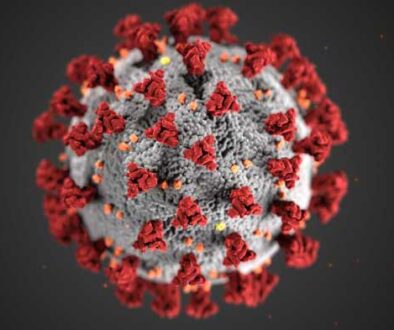Reversing Elevated PSA and Prostate Cancer Risk
Can prostate cancer risk be reversed?
Conventional thinking seems to believe that prostate levels progressively increase with age and that this is normal. Outside of certain drugs used to treat BPH and large doses of chemotherapy which may lower PSA levels, there are no known natural ways to reduce PSA levels. Below is a case I saw in my clinic.
Patient Background:
I have a patient Ken (not his real name) who I treat for the usual musculoskeletal pain issues. These are the usual kind of issues (Strained muscles, aches and pains) that come with being a 50-something active adult. Physical therapy didn’t seem to help, and which his physicians did not have any clear ways of treating, so he tried TCM (Traditional Chinese Medicine) with successful results.
In early 2021, Ken contacted my office, to discuss a new health problem that came up. He recently went in for his prostate exam and received results that concerned him. His urologist recommended a biopsy to check for cancerous tissue in his prostate. Ken wanted to avoid the procedure, but still address the elevated PSA levels.
Ken’s blood test results showed that he was at an increased risk for cancer. His risk had jumped considerably from the minimal risk range from his test 4 years prior in 2017, to over 3x the minimal risk range. Prior to this test, Ken had also been having some minor urogenital difficulties. He was experiencing a reduced libido, and some urinary dribbling. In addition, his father was diagnosed with prostate cancer at a similar age. Given the multiple risk factors, Ken was of course concerned, so he scheduled the consultation with me.
Risk Factors:
Let’s review some background on what his doctors are looking at to determine his risk…
What is PSA?
PSA (Prostate Specific Antigen) is a protein that is produced by the cells in the prostate and circulates throughout the body in the bloodstream. An elevated PSA, circulating in its various forms in the bloodstream, is an indicator of potential prostate issues. These issues can range from something as benign as inflammation of the prostate (prostatitis), to an enlarged prostate, to the other end of the scale indicating a possible increased risk for prostate cancer.
PHI – Prostate Health Index
PHI (Prostate Health Index) uses calculated scores based on multiple PSA blood markers, and according to research, helps in determining the cancer risk with more accuracy. It is considered a more accurate method of predicting prostate cancer risk than PSA alone, and is used in monitoring the likelihood of progression during surveillance of prostate cancer. There is no such thing as “zero risk” of cancer when using this grading system – the minimal risk probability is listed at 9.8% (let’s call it 10%). The next levels of probability of cancer are graded into the following groups (16.8%, 33.3%, >50%). Each of these is based on calculations using the varying levels of PSA, free PSA, and pro2PSA in the bloodstream.
Patient Background Continued:
Ken’s most recent test result was a concern for his urologist. The results indicated that he went from the normal range (10%) to a cancer probability risk of 33%.
His next steps:
A biopsy was recommended, but my patient wanted to avoid an invasive procedure if he could. Biopsies have negative consequences, including physical discomfort and like all invasive procedures can expose men to the risk of infections and possible bleeding. Thus, he told his doctor he would like six months to look at alternative treatments. The PHI score is useful in that it can help avoid unnecessary biopsies while still detecting 95% of cancers. Thus, a simple blood-test in six months would be a good chance to re-test and possibly avoid a biopsy. This is when Ken called my office.
Diagnosis:
After our discussion on his goals for treatment, my first step was to evaluate his current state of health by asking questions about his symptoms, potential lifestyle factors, pulse diagnosis, and tongue diagnosis. I also had him keep a diary of all the foods he was eating and drinking for at least a week. Typically a weeks worth of food logs will provide a baseline as to what he is consuming. (Assuming he had not gone on vacation and was eating,) this was a good way to see what foods are possibly affecting him and putting him in the state of imbalance.
After my initial exam, I diagnosed TCM patterns which were likely to be causing his urinary and prostate issues. My diagnosis indicated that these TCM patterns disrupted the healthy physiology of the lower abdomen, leading to his prostate issues.
TCM Pattern diagnosis:
Spleen Qi deficiency with Damp and phlegm in the lower abdomen, leading to blood stasis and heat.
Translation: the digestion (Spleen Qi) is weak, and was not able to properly eliminate waste products from the body. Over time, these waste products (“damp and phlegm”) accumulated in the body and settled lower in the body, leading to inflammation (heat), and pReventing healthy circulation (blood stasis). When function and circulation (flow of Qi, fluids and blood) in the body is inhibited, disease shows up.
If we can reverse the patterns, (which I believed we could), then we could reverse the disease.
My recommendation to him was the most cost and time-effective solution for his particular condition. I told him that we could treat this condition with Chinese Herbal Medicine, along with lifestyle modifications including specific dietary changes based on TCM principles of food energetics. Genetics and lifestyle lead him to this condition, and based on the principles of TCM, I had an idea on how me might be able reverse it, despite the “genetic predisposition.”
TCM Treatment Methods:
Treatment:
- Herbal medicine:
- We started with appointments every 1-2 weeks, and eventually every 3-4 weeks towards the end of treatment.
- I modified his custom herbal formulas as his patterns and symptoms changed throughout the treatment period. [The herbal medicine is a custom mixed formula of powdered extracts which he will mix with hot water and drink as a tea]
- Dietary rules:
- Stop eating foods in ways that are damaging your Spleen Qi (digestive function). [eg: dairy, alcohol, sweets, flour products]
- Stop eating foods which are damp generating
- Eat foods that will actually nourish the body [eg: meat, cooked vegetables, soups, stews, and more]
- Exercise in moderation to strengthen the body’s functions
The Results:
Following two months of treatment, some of Ken’s physical symptoms began to improve. He no longer had any dribbling issues during urination, and his libido had improved (sometimes significantly to his pleasant surprise).
Using just tongue diagnosis, I could see the changes occurring over time. The thick swollen tongue body, and thick white tongue coat at the start had improved after 6 months, losing the scalloped edges, and becoming more pink and healthy rather than pale and white.
After a little over six months of treatment and lifestyle changes, the big day arrived; he was tested again. I received a voicemail from Ken, and he was ecstatic! His PHI had dropped from a high of 38.95 to 23.97!
His doctor said:
You do not need a biopsy.
Keep doing what you’re doing.
Prostate Health Index (PHI) (Beckman) – Past Results
|
Name: Standard Range |
11/10/17 |
2/5/21 |
8/24/21 |
9/12/22 |
Notes: |
|
PSA, % free (Beckman): % |
15.52 |
8.81 |
9.17 |
10.00 |
Higher is better. |
|
PRO2PSa (Beckman): pg/ml |
2.53 |
5.19 |
3.31 |
2.97 |
Lower is better. |
|
PROSTATE HEALTH INDEX (PHI) |
15.34 |
38.95 |
23.97 |
23.89 |
Cancer Risk reduced. |
|
PSA, FREE (BECKMAN): % |
0.18 |
0.20 |
0.20 |
0.16 |
Lower is better. |
|
PSA, TOTAL (BECKMAN):0.00-4.00 ng/mL |
1.16 |
2.27 |
2.18 |
1.60 |
Lower is better. |
Summary:
What I have always believed, and what I often tell my patients is: “If you were healthy at one point in your life, we can probably get you back to health again. It may take some time and effort, but in my experience, it can happen.”
The body wants to heal itself. We just need to give it the right conditions and support to get it back to health and vitality.




